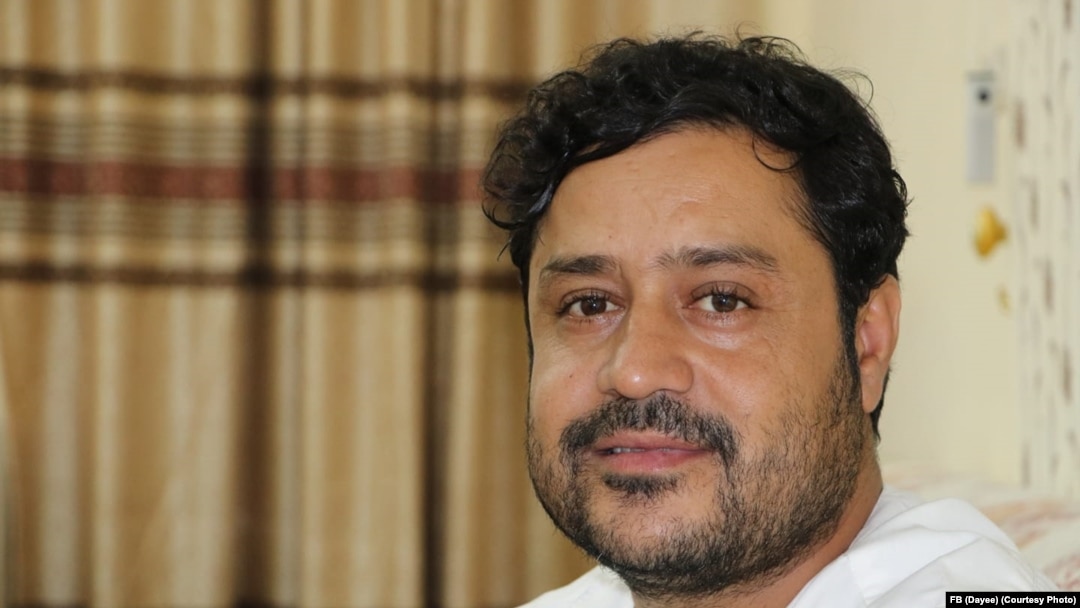Mohammad Ilyas Dayee, 33, was one of the best field reporters to ever work with Radio Free Afghanistan. His passion about his country and his fellow Afghans combined with his dedication to reporting on the ground from Afghanistan’s most dangerous province provided us with some of the service’s finest field reporting.
Dayee reported on all aspects of life in Helmand. The region, Afghanistan’s largest province, represents an intersection of both the country’s rich cultural heritage and the endemic problems facing it today. Roughly the size of Switzerland and bordering Pakistan, Helmand is located in close proximity to Iran and is known as the world’s hotbed of poppy cultivation and illicit drug production.
For the past 12 years, I have worked closely with Dayee as he tirelessly reported on the ongoing fighting with the Taliban, the militant group’s battle for control of key districts in Helmand, and the Afghan forces’ counterattacks. He constantly braved great dangers in bringing reportage from front lines around Helmand.
SEE ALSO: Obituary: Mohammad Ilyas Dayee, A Narrator Of Afghan Hope And Suffering“For the past eight years the warlords have been ruling us. Their hands have been stained with the blood of innocents and they have killed hundreds of people,” he quoted Azizullah Khan, a tribal leader in Helmand, as telling former Afghan President Hamid Karzai in March 2010.
Even when most coverage was focused on Afghan and NATO military action and Taliban attacks, he always sought to bring attention to the human cost paid by his countrymen as they faced life amid conflict and displacement.
One of his most memorable stories was about how Afghan forces have mimicked the Taliban’s own tactics in order to beat them back. “We are proud of what we are doing. We turn insurgent tactics against them and fight them in the same civilian dress they wear,” one member of the covert militia told him in February 2018.
SEE ALSO: Secret Afghan Force Mimics, Infiltrates TalibanHe was one of the first reporters to write about a grassroots peace movement that first emerged in Helmand and gained fame as it crossed the country. “For nearly 40 years, we have only suffered. We have only seen our loved ones being orphaned and widowed,” one pioneer of the movement told him in July 2018.
For Dayee, people were always the most important news, and he wanted their suffering to be known and held accountable for. His story on how his ancestral village, Chah-e Anjir, became “a living hell” for civilians caught in the crossfire painted a haunting portrait of life on the front lines of the fight against the Taliban.
"In response to a single shot by the Taliban, government soldiers typically answer with long bursts of machinegun fire, rockets, or mortar rounds,” Mazamil Shakari, a resident of Chah-e Anjir, told Dayee in December 2017. “But that doesn't often translate into a coherent strategy to push the insurgents out.”
SEE ALSO: Afghan Village ‘A Living Hell’ Amid FightingDayee truly loved his people and his homeland, and he was a fearless reporter who never backed down from a story.
He wrote about the cultural heritage of Helmand, too, and about the bids to preserve it amid rampant insecurity. The province is a rich crossroads of ancient civilizations and exotic contemporary communities, and Dayee wanted the world to hear its many voices and the stories they had to tell and to help preserve their heritage.
Like many among the younger generation in Afghanistan, Dayee was also a great lover of cricket, and another of his best stories that he produced for Gandhara was about the popularity of nighttime cricket in Helmand.
“I find the sounds of gun and artillery fire extremely depressing. I hope to have some relief and a good time here,” Aimal Khan a 16-year-old cricket enthusiast, told him in June 2017. “I want some escape from the constant pain.”
SEE ALSO: Nighttime Cricket Provides Entertainment On Afghan FrontlineDayee’s last story for Gandhara was about how Afghan officials are encouraging the cultivation of bananas as a way to replace opium poppies in Helmand. “I hope this experiment succeeds,” Jan Agha, a young farmer, told him.
Dayee will be missed by many. Not only does he leave a young family behind, but the staff of Radio Free Afghanistan and RFE/RL are bereaved of a colleague whose senseless death only further serves to highlight the need for future brave, conscientious field reporters like him who neither let the people’s stories go unheard nor the crimes of war go unanswered.
Editors' note: The USAGM Employee Association is seeking donations for the surviving family of Mohammad Ilyas Dayee to help them during this difficult time.


